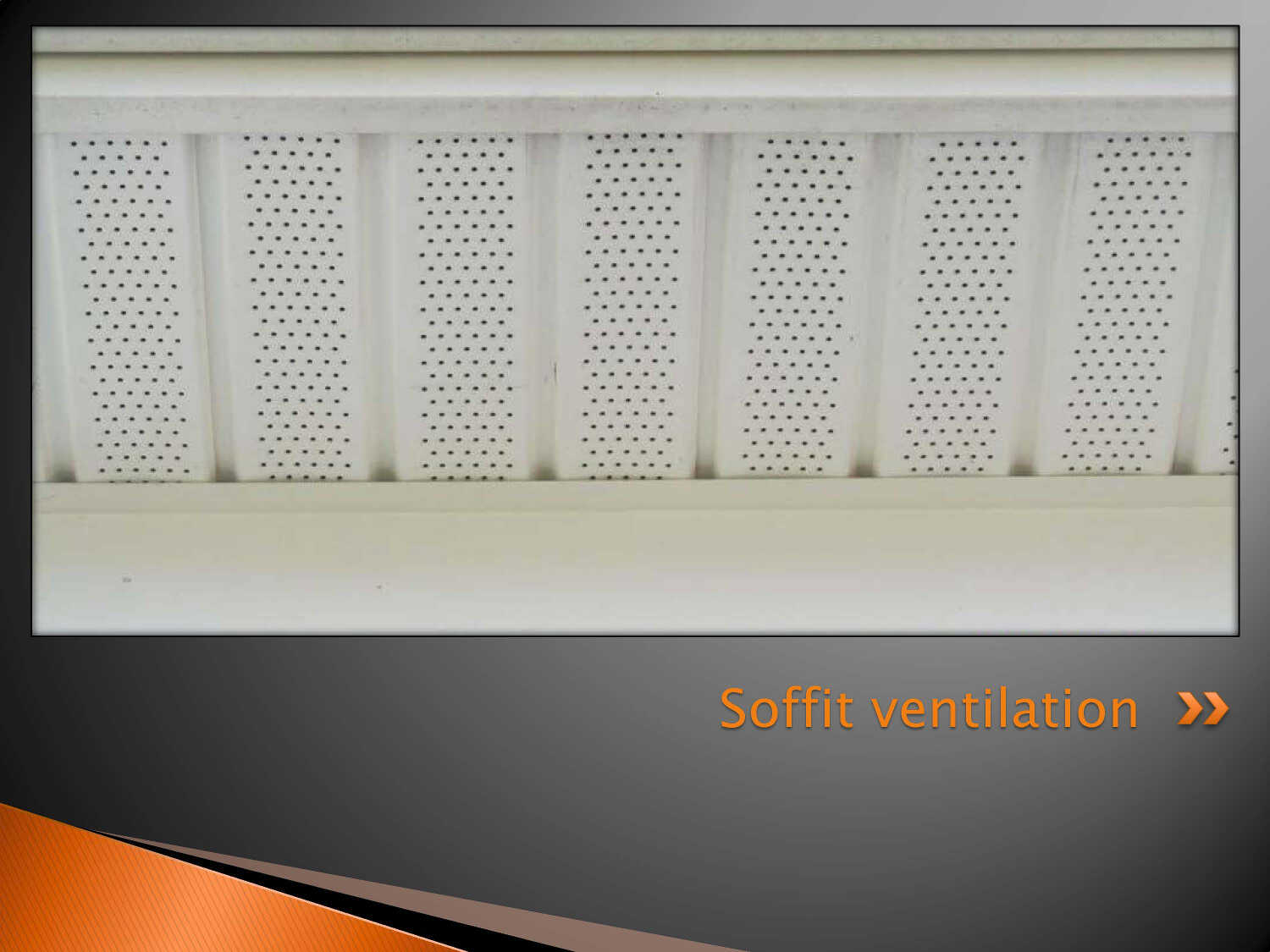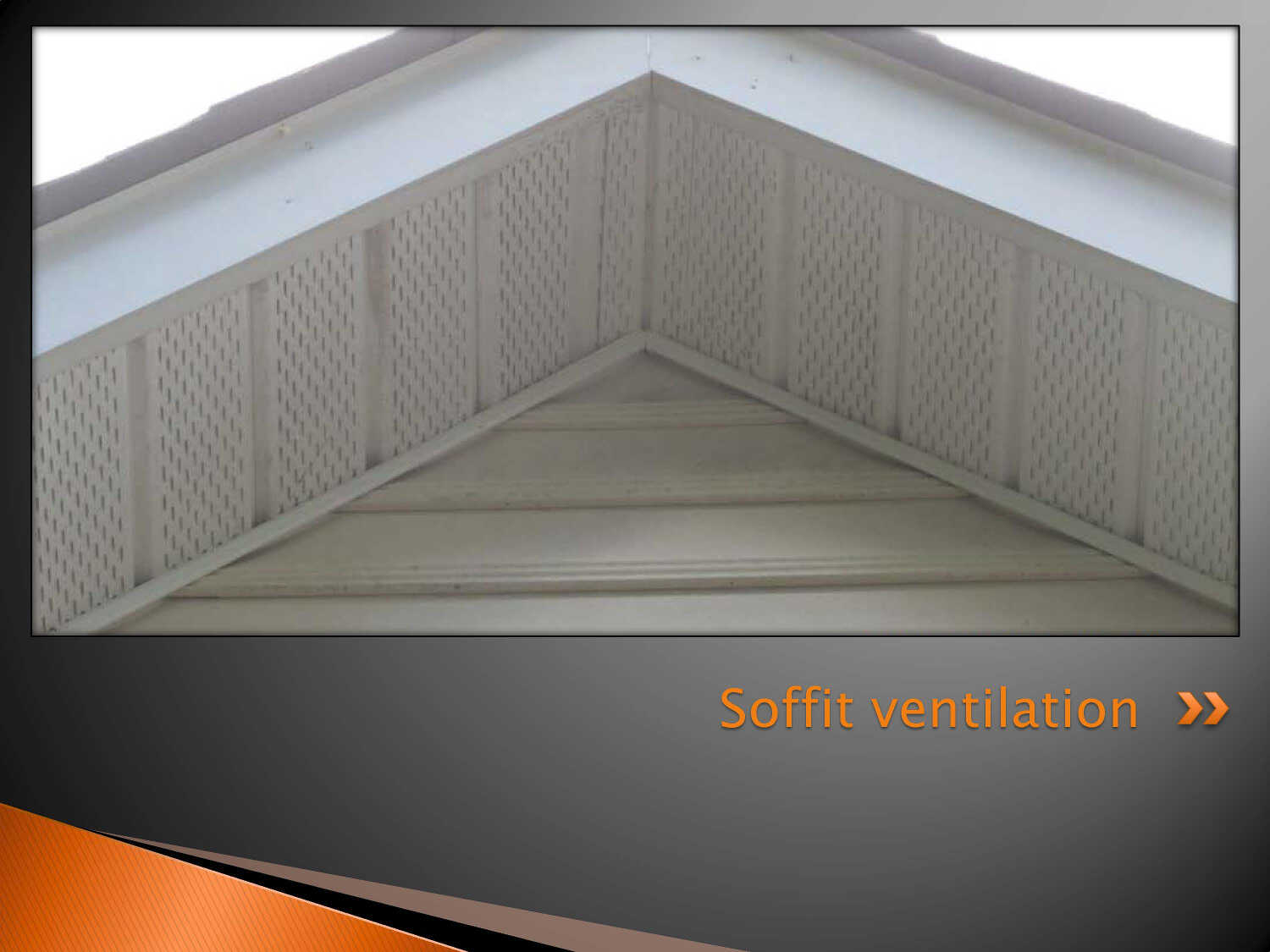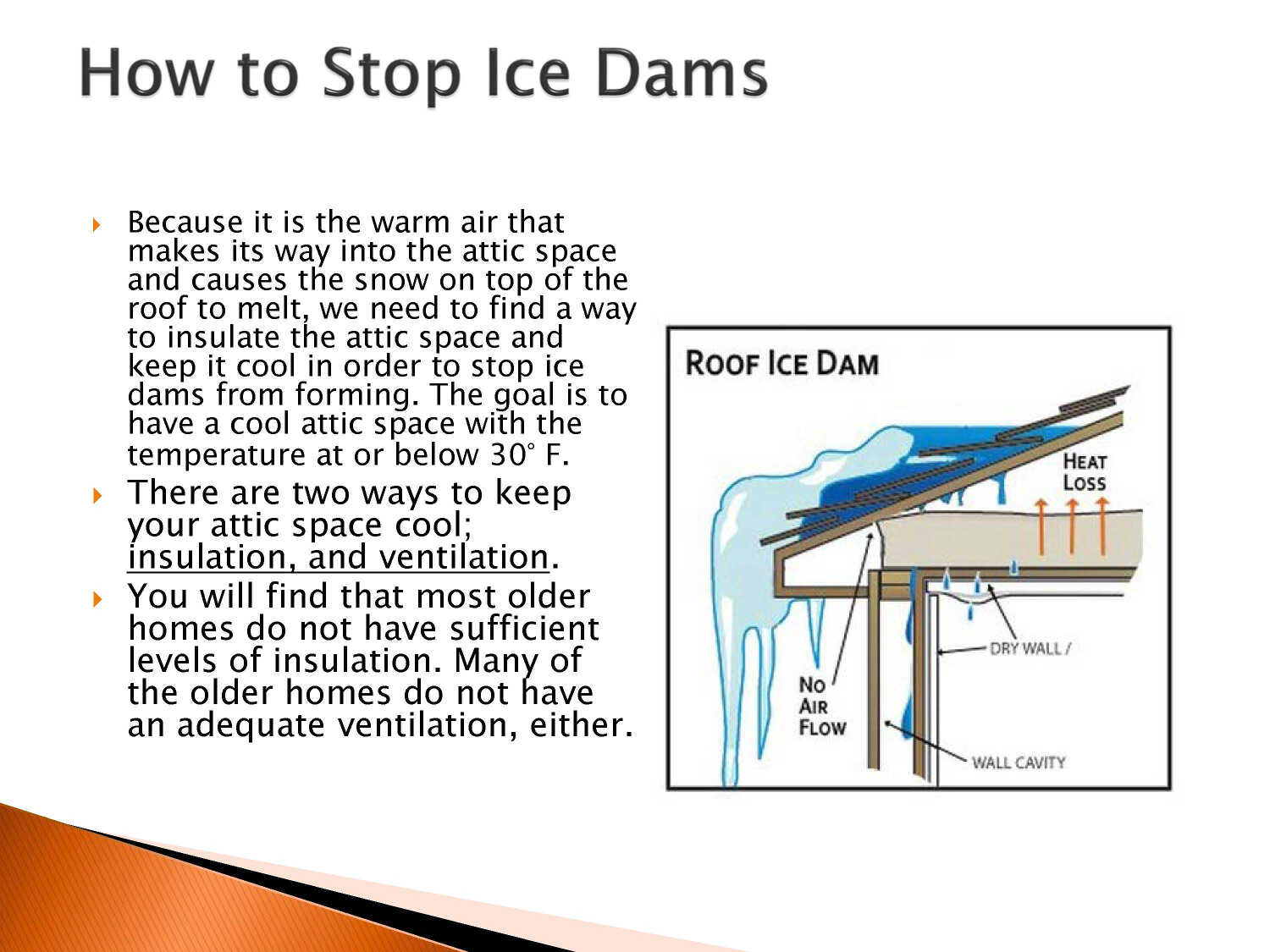The Asphalt Roofing Manufacturers Association and most local building codes require minimum free flow ventilation equal to one square foot per 150 square feet of attic floor area. This is obtained by having adequate intake and exhaust roof ventilation. Examples of exhaust roof ventilation include ridge vents, gable end vents, power roof vents, solar power roof vents, square roof vents, and turbine vents. Examples of intake roof ventilation include various styles of eave vents and drip edge vents. During the cold winter months, it is inevitable that the warm air from the living area of dwellings will permeate into the attic area, even with tighter construction techniques and standards. This increases the moisture levels causing the moisture vapors to rise towards the colder exterior drier air and then subsequently may condense on the underside of the roof decking causing roof decking deterioration. Ice damming, another common problem in winter months, is usually attributed to a lack of proper roof ventilation. During the summer months, radiant heat will raise the attic temperatures. Most recent research and testing have supported the theory that excessive attic heat will accelerate the aging process of asphalt roofing products. Proper intake and exhaust roof ventilation will aid in avoiding the aforementioned problems.
Examples of exhaust ventilations
Aluminum ridge vent

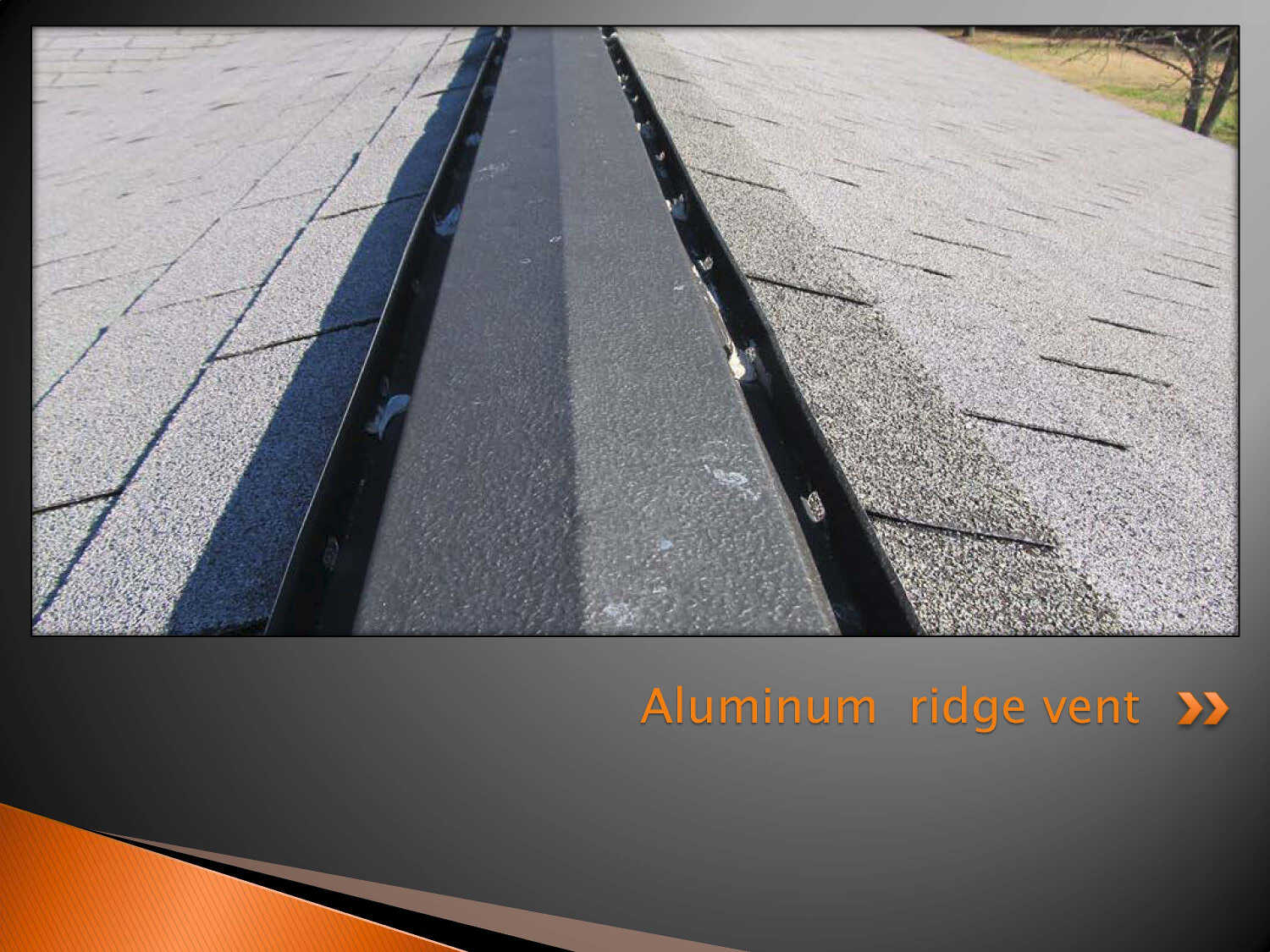
Examples of exhaust ventilations
Shingle Vent ridge vent
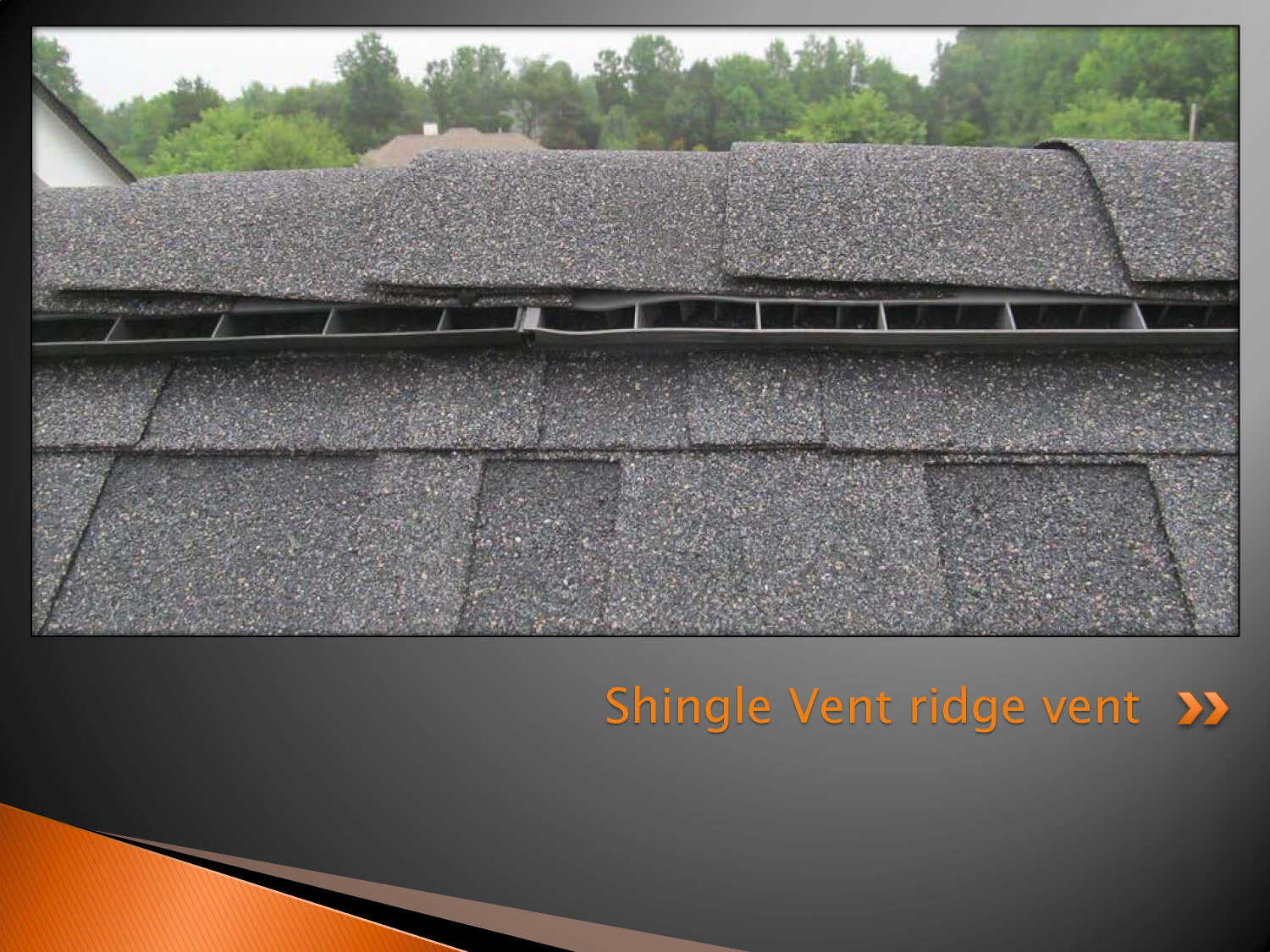
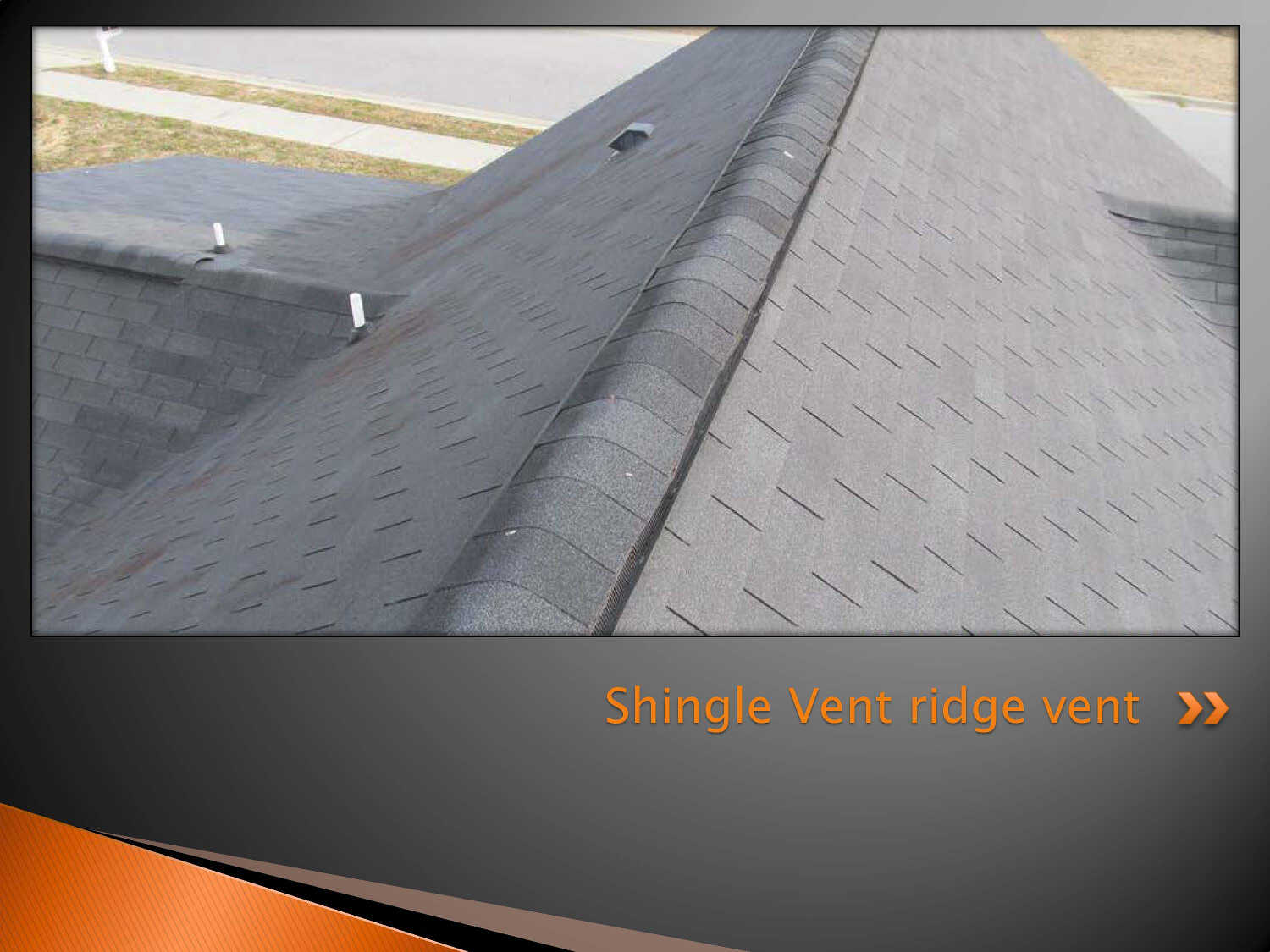
Examples of exhaust ventilations
Turbine Vent



Examples of exhaust ventilations
Gable end vent
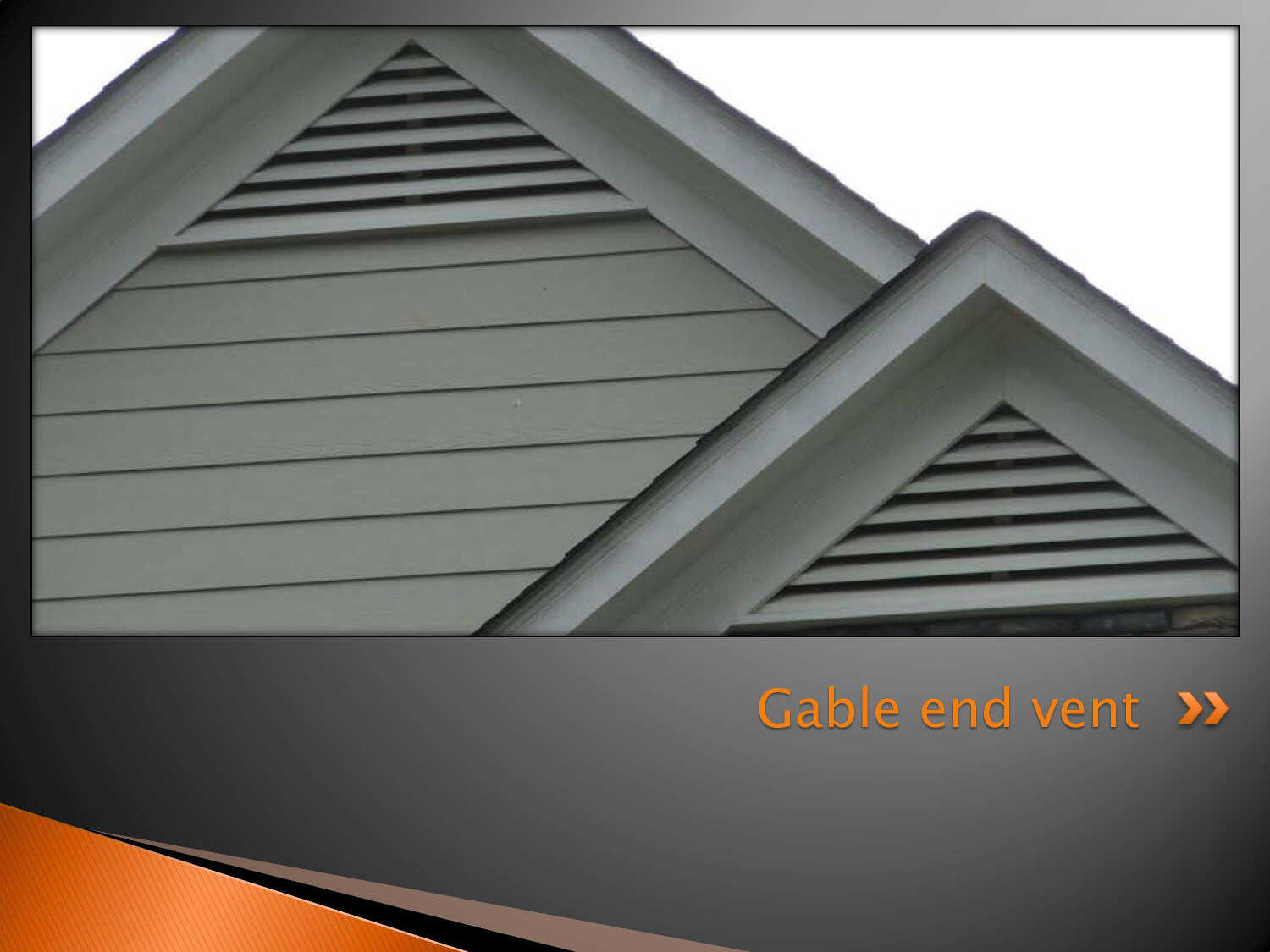
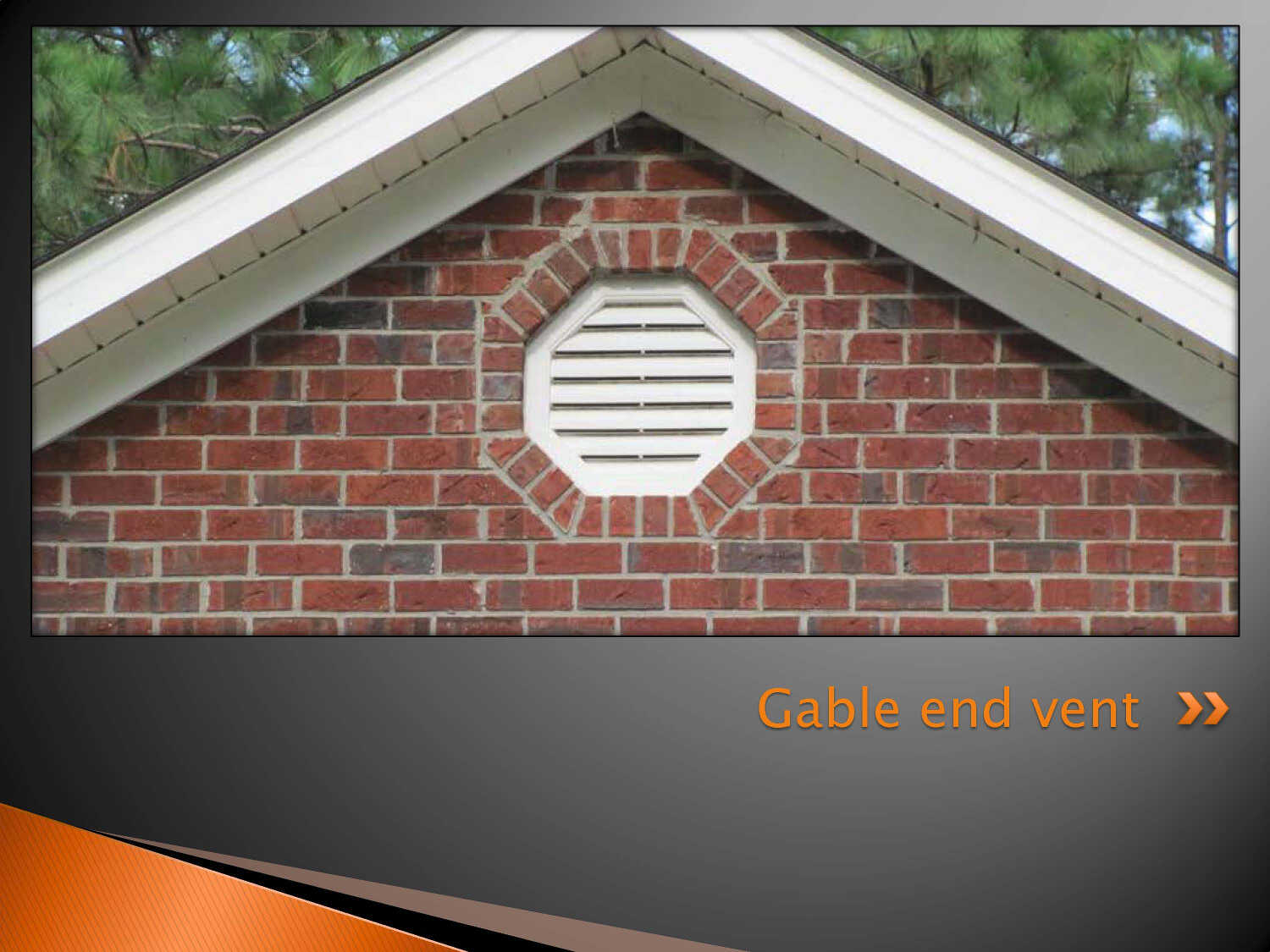
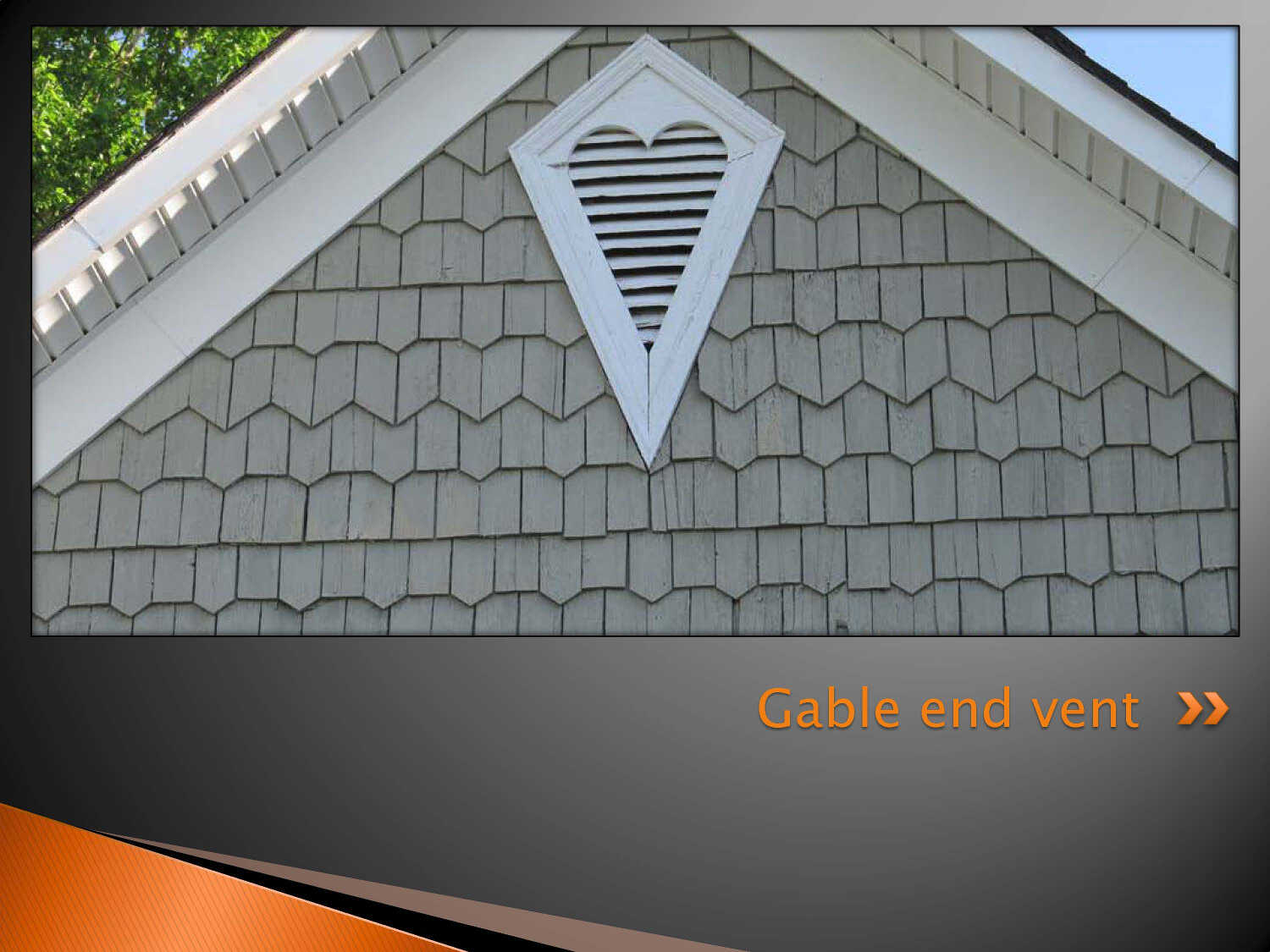
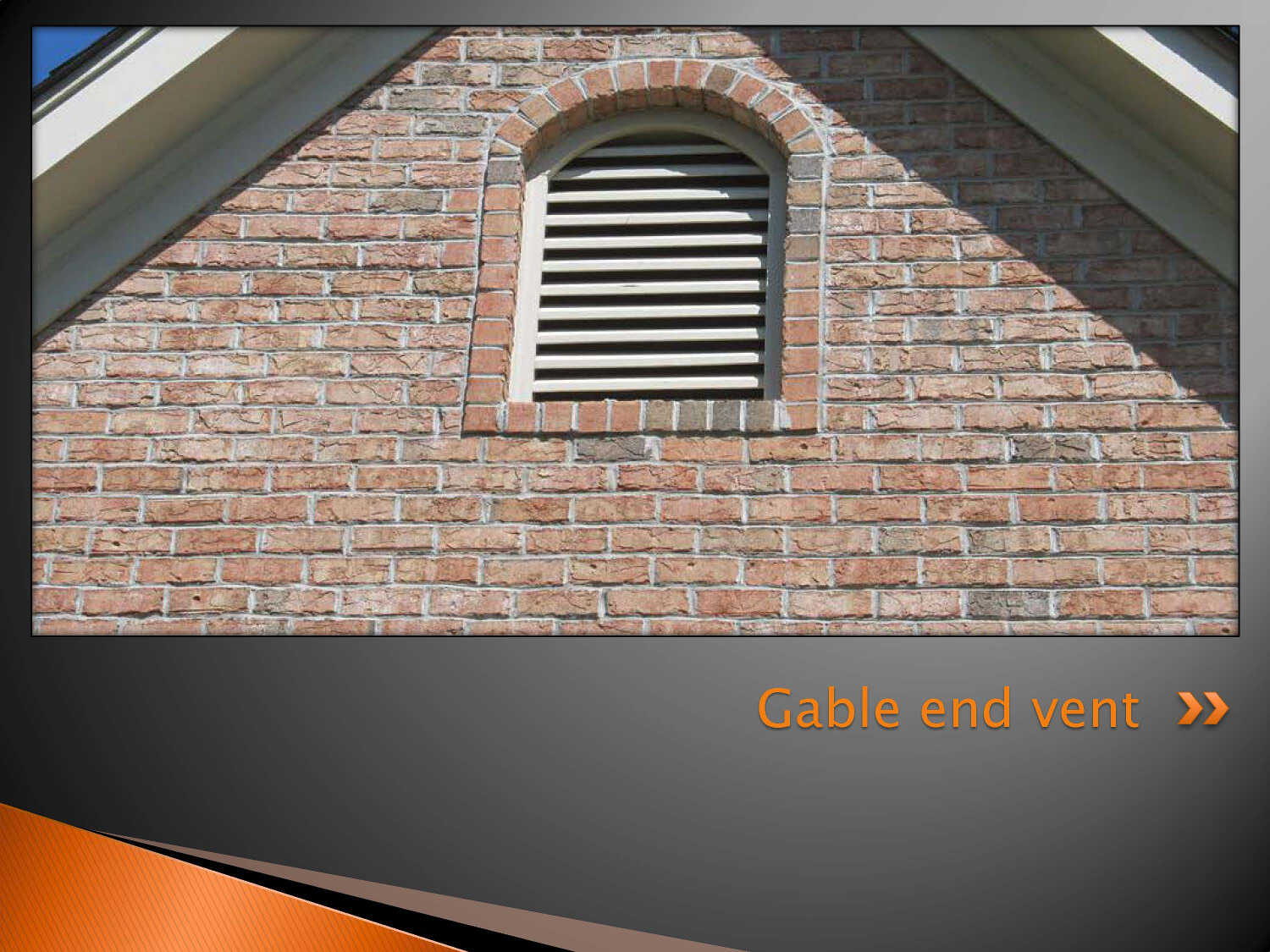
Examples of intake ventilations
Soffit ventilation
